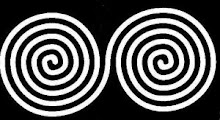PAGINA WEB: www.sanssoleil.es
Sans Soleil Ediciones es la rama editorial del Centro de Estudios de la imagen Sans Soleil, dedicada a la publicación de obras relacionadas con las temáticas de interés del centro. Se trata de una iniciativa sin ánimo de lucro que nace a principios del año 2013 con el propósito de cubrir, desde el compromiso y el rigor, un espacio todavía parcialmente tratado en lengua castellana como es el que ocupan los estudios de la imagen. Por estudios de la imagen entendemos todos aquellos acercamientos (multidisciplinares), bien desde la investigación, la reflexión crítica o desde la creación, a aquellas manifestaciones visuales acontecidas tanto en nuestra contemporaneidad como en tiempos pasados. La historia del arte, los estudios visuales, la teoría de la imagen, la antropología visual, la fotografía, el cine, los ensayos visuales, etc., encontrarán libre acomodo en Sans Soleil Ediciones, sin necesidad de responder a los moldes disciplinares que tan a menudo encorsetan o rechazan las propuestas más atrevidas y renovadoras.
Sans Soleil Ediciones no es una empresa productora de libros. Ni es una empresa, ni produce libros por dinero. Buscamos lectores, no meros consumidores. Se trata de una agrupación de individuos que creen en la posibilidad de una cultura comprometida con nuestra sociedad y con el conocimiento y, sobre todo, creen que es posible hacerlo al margen de los mecanismos editoriales dominantes; aquellos que precisamente han llevado a la ruina buena parte de las editoriales que anteponían la calidad y pertinencia de sus libros a las ventas que éstos pudieran generar. Aunque hoy día, inmersos como estamos en una deriva capitalista sin frenos, pareciera que un proyecto bajo estos presupuestos estaría definitivamente abocado al fracaso, las fuerzas y las ganas de sacarlo adelante permanecen intactas; quizás ahora más que nunca.
Se trata pues de una editorial que se gestiona de forma colaborativa como asociación cultural sin ánimo de lucro. De este modo conseguimos ofrecer libros de gran calidad, tanto en su contenido como también en su forma, a un precio lo más ajustado posible para que puedan llegar al máximo número de personas interesadas.
La editorial se mantiene con las ventas de los libros, así como las suscripciones, sin las cuales sería imposible asegurar no ya su consolidación, sino su supervivencia.













